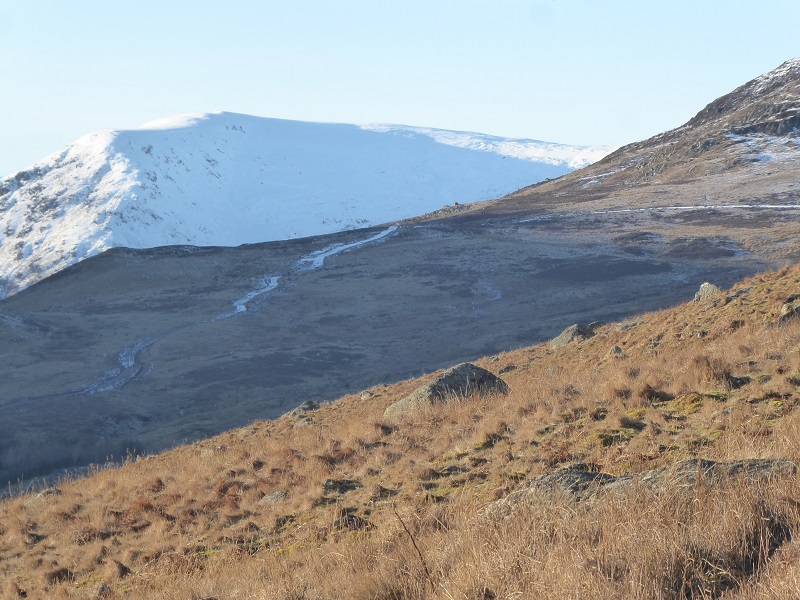
Back in February 2018 Parkswatch called for the Cairngorms National Park Authority to start taking enforcement action against the unlawful hill roads in Glen Clova (see here). The CNPA responded to say that in most of the cases it was unable, whatever it thought of the roads, to do so. This was either because the roads appeared more than three years old, the time period planning authorities are currently allowed to initiate action against unlawful developments, or because they pre-dated the Prior Notification System for private roads deemed to be for forestry or agricultural purposes. They did, however, inform me and members of the LINK Hill tracks group that they were investigating the road by the Glen Clova hotel.
At the end of September they issued two enforcement notices. That is extremely welcome. This post takes a look at the issues and the implications.
The lower section of track


For the lower section of road the CNPA appears to have accepted that there was, previously, some form of track here. It has therefore required the Glen Clova Estate to submit a retrospective planning application for the road within three months. Should they do so, the CNPA can then impose planning conditions. This would enable the CNPA to require the construction work to meet certain standards and through that address at least some of the damage that has been done to the landscape and natural environment. (A helpful explanation of the enforcement process is set out in the CNPA Enforcement Charter (see here)).
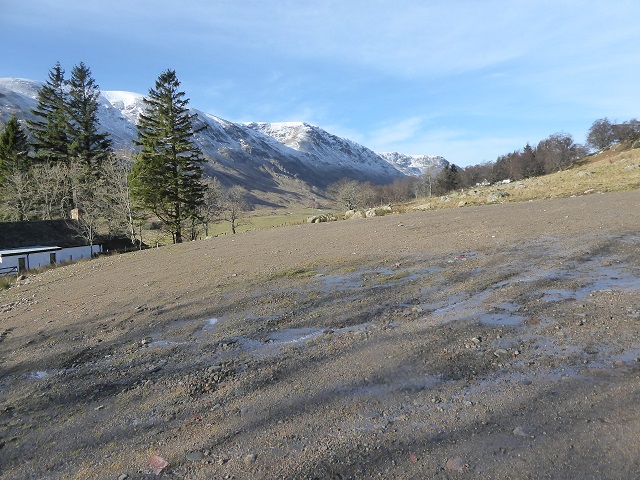
This cumbersome process helps illustrate the inadequacy of the enforcement powers available to the CNPA. My old OS maps don’t show this hill road or the multitude of other roads that have been created in Glen Clova over the last twenty years transforming the landscape. The problem the CNPA and other Planning Authorities face, however, is that to remove any unlawfully constructed road they need to be able to prove when the road was constructed and this was within three years of them initiating action. Without constant monitoring, its hamstrung under rules which appear designed to favour developers and landowners. Thankfully the CNPA has now, I understand, set up a system using google earth to record when changes take place. This should in theory make enforcement easier in future, provided they have sufficient staff to do so (not easy under austerity). In any sane system, however, Planning Authorities would be able to take enforcement action against unlawful developments in National Parks and other protected areas for at least ten years after they were constructed. We are not talking about minor modifications to a house here but developments which permanently scar the landscape.
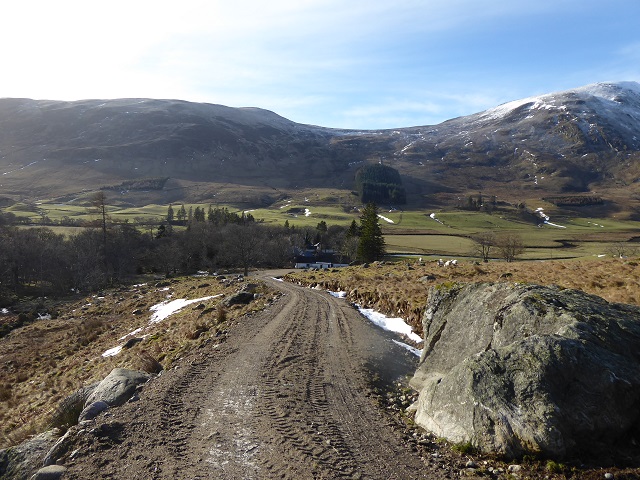
If the Glen Clova estate do submit a retrospective planning application, the type of conditions the CNPA could impose might be to narrow the road and create a central grass strip and restore the outside edge of the road and ditch with vegetation. While this could reduce the landscape or erosion impacts it won’t remove either completely. Part of the first section of road, for example, is too steep and contrary to SNH’s Best Practice Guidance that says the angle of roads should be no more than 14 degrees . Having accepted there was a road here, its almost impossible for the CNPA to address all the issues created by its “upgrade” and they will be left doing the best they can.
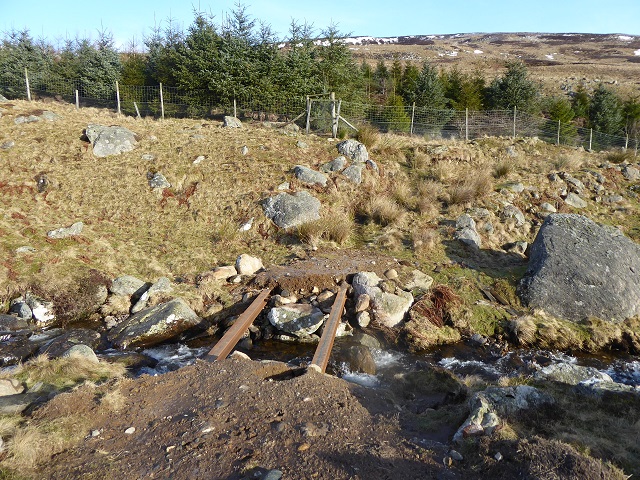
The lower section of road, however, is also now being used as a “trunk” road for further road development and several ATV created routes have now developed off it.
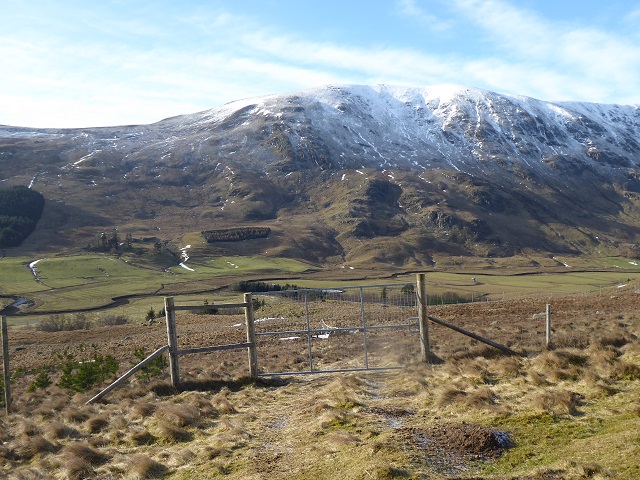
Normally new woodlands, when planted, can be left for ten years so why is this gate being so regularly accessed by ATVs which are creating a new track back down the hill?
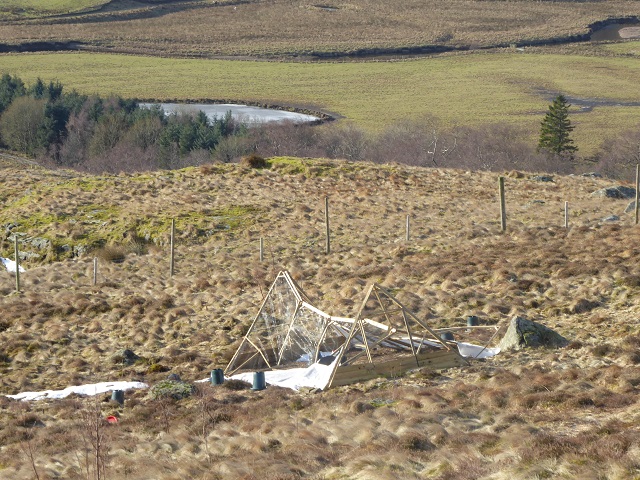
The answer is that this new “minor” branch road is not for forestry purposes at all but for game management and, as new road, should require full planning permission. Unfortunately the CNPA has failed to control off-road use of vehicles. So, what happens is ATVs create a track which eventually erodes and the landowner then decides to “upgrade” this. This appears to have been what happened to the “main road” here. The estate can then simply argue that a track has been in place for three years and the CNPA is powerless to remove it.
That is why I have been arguing that, to prevent track creep, when the CNPA does grant planning conditions for new hill roads it should issue conditions controlling off-road use of vehicles. Planning Authorities have the power to issue planning conditions “as they think fit”, so why not use them to prevent further track creep? That would be an entirely reasonable thing to do and prevent landowners undermining the current system as it applies to hill roads through letting tracks develop through ATV use. In addition the CNPA could use its conservation making byelaw powers to control how vehicles are used.
The upper section of the new road
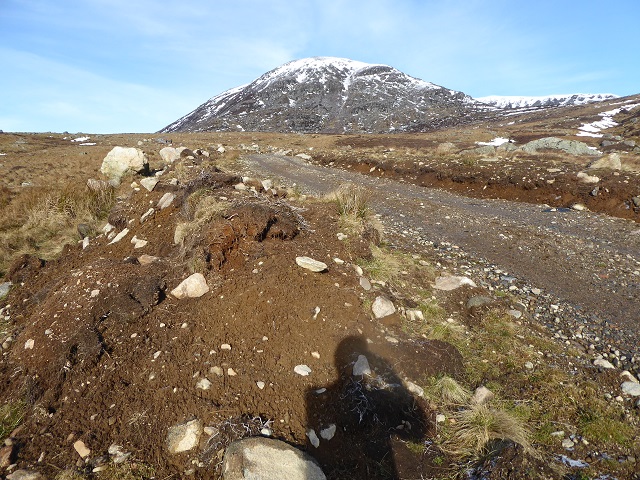

For the upper 1.5km section of the road, the Enforcement Notice requires the Glen Clova Estate to restore the land within 28 days. The estate have a right of appeal to Department of Planning and Environmental Appeals but, if they don’t do so and don’t restore the road completely, they could face a fine and the CNPA can then undertake the work themselves and recover the costs.
This is the second time, to the best of my knowledge, that the CNPA has taken such action in relation to the unlawful hill roads which have proliferated across the National Park. However, the first time they did this on the Cluny Estate track (see here) at the head of Glen Banchor they then withdrew the notice. Its a significant step in the right direction as long as they go through with it.
If the CNPA is successful, the message to landowners is that they can no longer assume that if they create an unlawful road they will be allowed, with a tweak here and there, to leave it in place. The cost implications for the landowners are considerable as it will cost far far more to restore this ground to its original condition than it cost the Glen Clova Estate to create it.

Thankfully the apparent owners of the Glen Clova Estate, the Niven family, are not short of a bob or two as is shown by the latest accounts for one of their companies, Glen Clova Farms Ltd, and should in theory be able to afford the full costs of restoration. Whether the land here is part of that company’s assets is, however, less clear. One of the reasons why it might have taken 18 months for the CNPA to take enforcement action is to establish who actually owns the estate and how they might recover the money.
In my view, however, in National Parks it should be quite simple. If the landowners don’t pay up or co-operate with the costs of restoring the land, the Scottish Government should step in to pay these and assist the National Park Authority to transfer the land into public ownership. The land could then be managed to deliver our National Parks statutory conservation purposes. There have been difficulties with Planning Enforcement on the Glen Clova Estate in the past (see here).and its also one of the many estates in the National Park which has failed to produce an Estate Management Statement setting out how it would manage the land according to National Park principles.
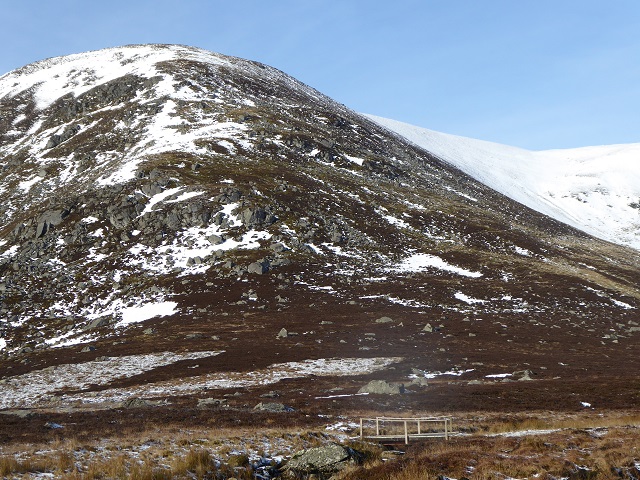
The new road here is not, however, the only new development which needs to be removed.
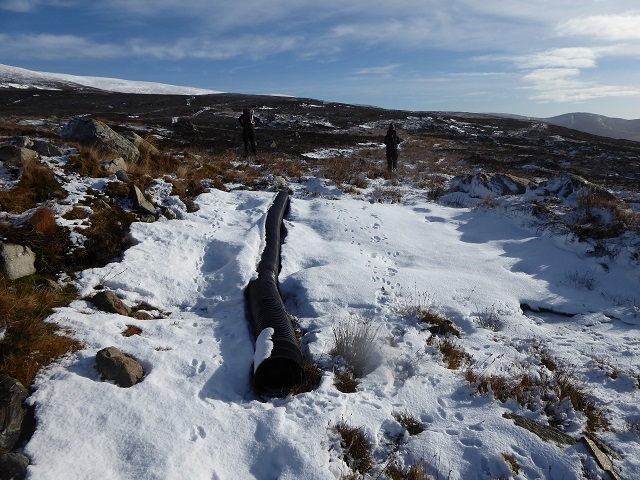
It appears the Glen Clova estate intended to extend the road further towards the hydro scheme.
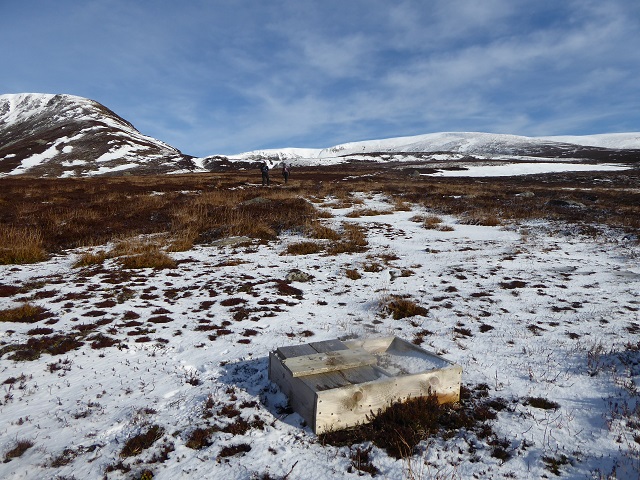
Other ATV tracks now extend beyond the end of the constructed road as part of the general intensification the ways grouse moors in the National Park are managed. Unless the CNPA uses it current enforcement to stop this further track creep, the Glen Clova Estate could in theory just agree to restore the constructed road and then create a new ATV track alongside it. That would be back to square one.
A sign of just how little the landowners appears to care about the landscape in this case is shown by the junk that is still littered around the hydro intake closest to the end of the road (which I covered in Feb 2018):
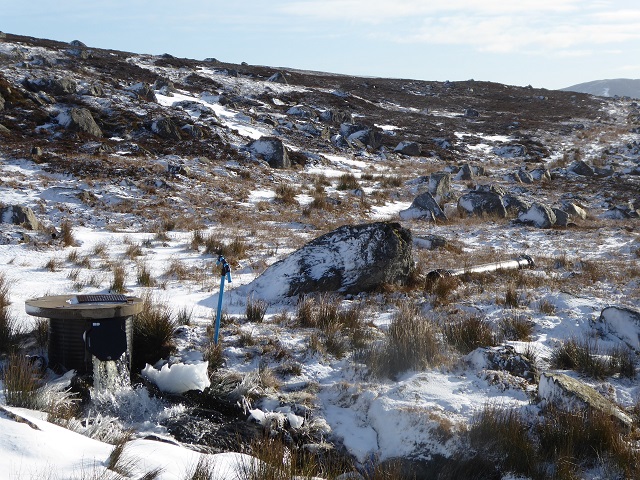
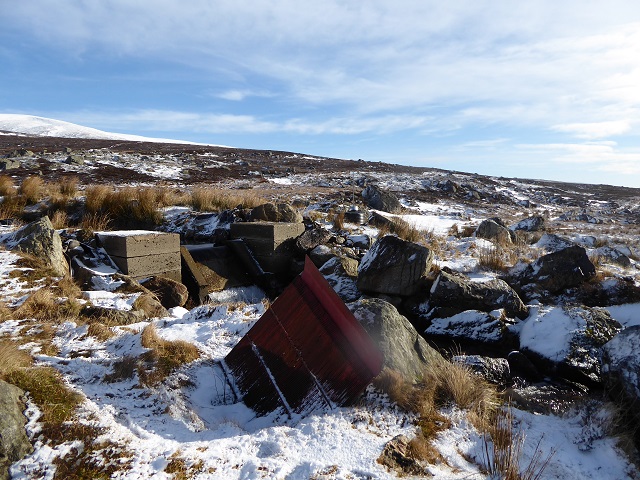
Before the road is removed, the CNPA should require the Glen Clova Estate to remove all this junk.
Why, with this record, should the estate be given any more chances?
What needs to happen
Its taken 18 months for the CNPA to serve these two enforcement notices. These notices are in turn 18 months on from the last two enforcement notices the CNPA issued in March 2018 (both involving a requirement for estates to submit retrospective planning applications for hill tracks). Enforcement is a very slow and difficult process. While I don’t know the detail, and whether the CNPA could have got to this position more quickly, I don’t think most of this is their fault. Its down to the way the planning system has been designed to favour developers and land owners. As I said in a previous post:
While the Scottish Government repeats ad nauseum the need to speed up planning applications – and judges our Planning Authorities on this – it has so far has taken no interest in trying to speed up enforcement process.
The CNPA therefore deserves credit and support for pursing this case and taking action. Let’s hope they are successful and it serves as a warning to landowners across the National Park that they need to start adhering to the law like the rest of us.
The CNPA, however, will undermine this great piece of work if it does not come up with a method to prevent further track creep, whether through the imposition of planning conditions or conservation byelaws. The risk is that to avoid the serious cost consequences of having to restore unlawful new roads, landowners will simply allow their staff to drive ATVs all over the land until such scars have been created that the CNPA begs them to put in a road to reduce the damage. The CNPA will never successfully address the issue of hill roads until it also tackles the issue of ATV use off-road. Let’s hope that these enforcement notices are followed by a systematic programme of action to bring all hill roads and ATV use under proper control.

The hill track/road construction problem in Scotland has been very well documented since the 1960s when Cairngorms expert Dr Adam Watson first rang the alarm bells. The evidence has been there for decades. But no politician in parliament at UK or Scottish level, except the Green MSP Andy Wightman, has made any effort to bring this deplorable impact on our wild landscapes under proper control. We need to correct this situation at the next elections to the Scottish Parliament. This can be achieved by ensuring that we only elect politicians who are prepared to prohibit the construction of such tracks and roads in all notified Wild Land Areas and, in all other locations, to subject them to full planning control procedures.